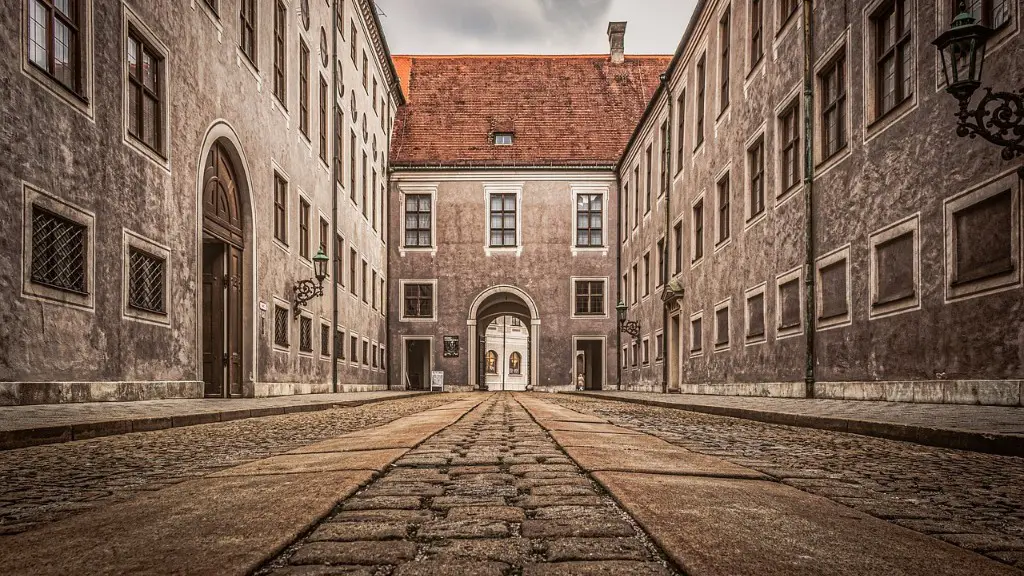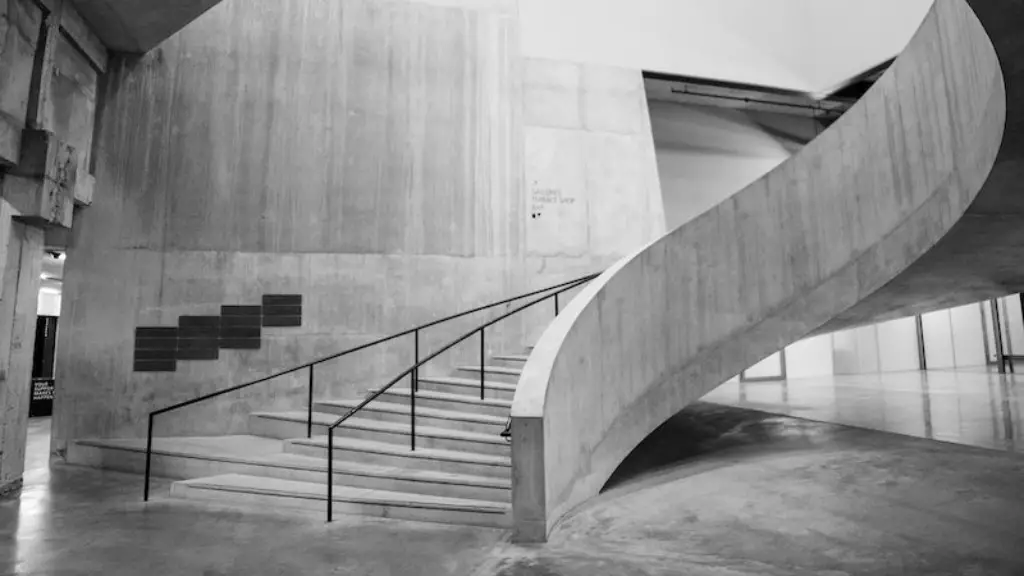Technology has revolutionized processes of almost every industry in the world. With the increasing advancements of computers, coding and engineering capabilities, it is no wonder why architecture is one of those areas reaping the rewards of the digital age. We are now able to design intricate, 3D detailed building concepts that before were inconceivable. But this is just the beginning – as technology continually evolves, so too does its ability to reshape the face of architecture.
The use of computers for enhancing building design has been around for some time. Design programs like AutoCAD have been used for over 30 years to streamline the design decision-making process. Today, however, the possibilities for computer-aided design have become immense. Digital modeling allows for a far greater degree of precision in terms of measurements, detail and opinions that can be presented – something that would have taken months or years to complete by hand. It’s amazing to conceive the difference when you look at projects like the Stata Center at MIT, a project that was built between 2000 and 2004 in part thanks to the use of digital modeling.
Digital models and 3D scanning technology are being increasingly used in the field to create more detailed renderings of projects. This technology is helping to bridge the gap between design and reality, as digital models can be roomed and manipulated in real time as specifications change and ideas develop. 3D laser scanning has been used to create highly detailed digital representations of existing buildings, allowing for teams to gain insight on historical projects unseen in the past. With the advancement of three-dimensional printing and desktop milling, the production of physical models – which only a few years ago were too costly to warrant – can now be produced quickly and cheaply.
The development of the Internet of Things (IoT) has also been critical in the development of smart buildings. The IoT is made up of numerous connected devices that supposedly offer a more intelligent and autonomous environment. IOT enabled buildings are able to self-adjust their own temperature levels and lighting, control energy consumption, and can even tell if an area is being used properly. Furthermore, the introduction of virtual reality (VR) and augmented reality (AR) have opened up the boundaries of traditional design and construction. Now the boundaries for the architectural experience are vast and the possibilities are seemingly endless.
The benefits of technology in architecture are numerous, from improved accuracy and streamlined workflow, to integrated building-management systems. But, with these advancements in technology comes challenges. For one thing, the cost. Complex pieces of software, advanced hardware and new systems can become prohibitively expensive for smaller firms or individual architects. Additionally, as technology continues to evolve, staying up-to-date also has its challenges. With the advances in technology comes the need to adapt. Training and re-training staff, as well as researching the latest technologies and finding ways to integrate them into your workflow can be daunting.
Despite those challenges, technology has revolutionized the world of architecture and construction in ways that were never before possible – enabling designers and engineers to communicate more effectively, create more accurate models, bring ideas to reality more rapidly, and conceive structures that break beyond the traditional boundaries of construction.
The Impact of 3D Printing on Architecture
One of the more recent technologies to enter the world of architecture is 3D printing. Not only can it be used for scaled models, but you can also 3D print large-scale components and even entire buildings. What was once considered an unconceivable technology is now a reality.
3D printing allows architects to create intricate, detailed models and prototypes to test out ideas both quickly and inexpensively. It is also cost-effective for architects in terms of material costs, as only one type of material is needed and any excess material is easily recycled. 3D printing also reduces construction waste, since the use of digital materials requires cutting much less material during the building process. The ability to create unique, intricate prototypes helps architects and engineers bring their ideas to life faster, enabling them to test and refine their ideas at a much faster rate than before.
3D printing is an incredibly versatile technology, enabling free and organic forms that are near impossible to create with traditional construction methods. Not only can 3D printing create building components like walls or columns, but it is also capable of producing complex structural elements like staircases or bridges. These capabilities give architects the freedom to create works of intricate, imaginative beauty.
Although 3D printing is still relatively new and the technology is still being developed, its potential to revolutionize architecture is huge. Now architects are able to create structures with more intricate shapes, structures made with unconventional materials like clay, sand, and concrete can be fabricated with 3D printing, and complex structures can be produced in a fraction of the time it takes when using traditional methods.
The Dominance of the Smart Building
With the rise of the Internet of Things (IoT), smart buildings are becoming increasingly common. Rather than relying on human labor to operate a building’s systems, smart buildings leverage sensors, artificial intelligence and automated systems to take over. IoT enabled buildings can detect temperature levels, room occupancy, air quality and more, and then utilize that information to control certain systems autonomously.
Smart buildings provide a slew of benefits, from increased safety and security to reduced energy costs. Smart buildings are also adept at gathering valuable data from occupants, allowing for much more in-depth analysis. This data can be used to create a better user experience, perform maintenance more quickly and make other important decisions.
One of the biggest advantages of a smart building is the ability to remotely control various features, such as air temperature and lighting. Fitting these features with sensors allows them to automatically adjust to the environment and usage of the building. This provides an increased level of comfort to the occupants – eliminating the need to manually adjust these features. Additionally, smart buildings are much more energy efficient – reducing energy use and costs.
Smart buildings are also paving the way for advancements in the user experience. Occupants are now able to connect their phones and various other devices to the building’s system – allowing them to access the building’s features, such as lights and thermostats, anytime, anywhere. This provides a much more intuitive and efficient way to interact with the building.
Smart buildings are quickly becoming the norm – and with the emergence of 5G technology, we’ve only scratched the surface of what’s possible. As technology continues to evolve, so too will the capabilities of the smart building.
The Marriage of Technology and Human Issues
As technology continues to change the face of architecture, it is important to consider how this transformation impacts the human side of architecture. How are architects adapting to new digital design tools, how are construction projects impacted, and how is technology changing the way we interact with our built environment?
Technology has enabled architects to bring more imaginative concepts to life–designs that may have seemed impossible before. Yet, with this new-found freedom and creativity, comes a loss of connection to place and space. Technology has the potential to create new architecture, but it also has the potential to contribute to the homogenization of public spaces – where buildings cease to be unique, and cities become little more than competing spectacles.
As technology becomes increasingly prevalent in architecture, we need to consider how it impacts the social side of architecture. Building codes and regulations must be updated to incorporate new methods, such as 3D printing, and design methods must be adapted to accommodate this technology. Additionally, as buildings become smarter and more autonomous, people will have to be trained in a different way. How do we train people to interact with buildings that are essentially machines?
Technology is changing the way architecture is conceived and constructed, but it is also changing the way we interact with our built environment. We must consider the impacts of these technologies on the human experience. Doing so will ensure that our built environment is both efficient and enjoyable to occupy.
A Look to the Future of Technology in Architecture
As technology continues to advance, so too do the possibilities for transforming architecture. Robotics, AI and biodegradable materials are all up-and-coming trends that have the potential to revolutionize the world of architecture. Robotics and AI are enabling projects to become more efficient, as tools are programmed to perform certain tasks independently. Additionally, the use of biodegradable materials has the potential to reduce construction waste, while also creating structures with more durable and sustainable components.
Augmented and virtual reality are also revolutionizing the design and construction process. AR and VR are giving architects, engineers and builders the opportunity to visualize and experience buildings before they are even built. This enables teams to make better informed design decisions, and provides the opportunity to engage with projects on a much deeper level.
The use of drones is one of the more recent advancements in technology to enter the world of architecture. Drones are enabling projects to map terrain quicker, as well as providing an insight into the progress of projects during construction. Additionally, the ability to use drones to survey existing structures provide invaluable data, allowing for teams to gain insight on existing projects quickly and easily.
The possibilities enabled by digital technology are allowing architects to not only build faster and more efficiently, but to also create projects with unique, imaginative shapes – enabling creativity to break beyond the traditional boundaries of construction. As technology continues to develop, the possibilities for transforming architecture will only continue to increase.





